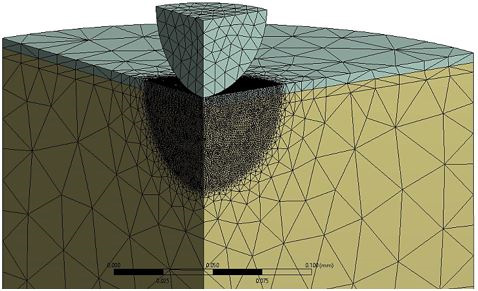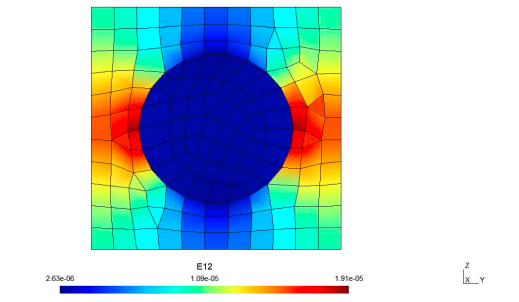University of Illinois at Chicago Leverages SwiftComp Software to Improve Understanding of Porous Coatings
Software to accelerate development and adoption of new materials for manufacturing by predicting effects of porosity level on strength
West Lafayette, Indiana (USA) - AnalySwift, LLC, a provider of efficient high-fidelity modeling software for composites, announced today that University of Illinois at Chicago (UIC) is participating in its Academic Partner Program (APP), and it is using its SwiftComp simulation software for researching new porous coatings for use in manufacturing. The APP offers participating universities no-cost licenses of engineering software programs SwiftComp and VABS so students, researchers, and faculty can leverage the tools in their academic research.
The SwiftComp program is a general-purpose, truly multiscale modeling code for composites and other heterogenous materials. It directly and seamlessly links detailed microstructure and structural behavior for composite structures including beams, plates/shells, and 3D structures. Broad applications include high strain composites in deployable space structures, printed circuit boards (PCBs), high-end fishing rods, honeycomb sandwich structures, and many more.
“We are excited by the work being done by the University of Illinois at Chicago on new materials for manufacturing and pleased they have selected SwiftComp as part of their simulation efforts,” said Allan Wood, president & CEO of AnalySwift.
“We use nano-to-macroscale simulation tools to accelerate the development and adoption of new materials for manufacturing,” said Santanu Chaudhuri, professor of materials engineering at the University of Illinois at Chicago. “Our group, Accelerated Materials Research Lab (AMRL), is in the Civil, Materials, and Environmental engineering department at UIC. AMRL connects materials design to materials manufacturing and performance. Using computational and experimental methods, we develop novel methods for accelerating the transition of materials from design inception to deployment. AMRL tools and capabilities help realize the goals of computational materials design and connect synthesis to scalable materials processing for a circular economy.”
“We used the Mechanics of Structure Genome concept, implemented in SwiftComp, to calculate the effective elastic and mechanical properties of porous coatings under different loading conditions,” said Dr. Arash Samaei, researcher at AMRL. “The test case for our study was Zirconia-Silica bilayer coating on aluminum alloy. The simulation results enabled us to understand the effects of porosity level on the strength of the macroscale structure. The local stress, strain fields helped us to study the failure mechanisms in such coatings under nanoindentation tips. SwiftComp allowed us to determine the effective properties of the materials that enabled us to accurately simulate the mechanical response of the components.”
“In general, Zirconia-Silica conversion coatings are considered as a potential alternative to Chromium-based conversion coatings, which are fabricated with toxic chemicals,” continued Dr. Samaei. “Not only can zirconia-silica-based conversion coatings provide excellent corrosion protection for metals and alloys used in aerospace applications, but they can also be manufactured using non-toxic chemicals via a plasma-based deposition process.”

Coating/substrate structure under a nanoindentation tip to measure the mechanical response of the component
Published by AnalySwift, LLC on Jul 29, 2021




